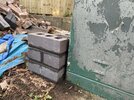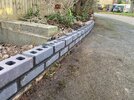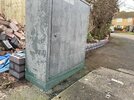With a large radius you will probably be OK without the cuts and using the level and plumbing points.
On some jobs the level isn't used that much. Getting the rods set perfectly plumb for the trammel takes care of the wall staying plumb, and having datum pegs and a steel straight edge made to the shape of the curve means that you can set the bricks to the gauge and keep the top front arris of the bricks inbetween right.
On some jobs the level isn't used that much. Getting the rods set perfectly plumb for the trammel takes care of the wall staying plumb, and having datum pegs and a steel straight edge made to the shape of the curve means that you can set the bricks to the gauge and keep the top front arris of the bricks inbetween right.




